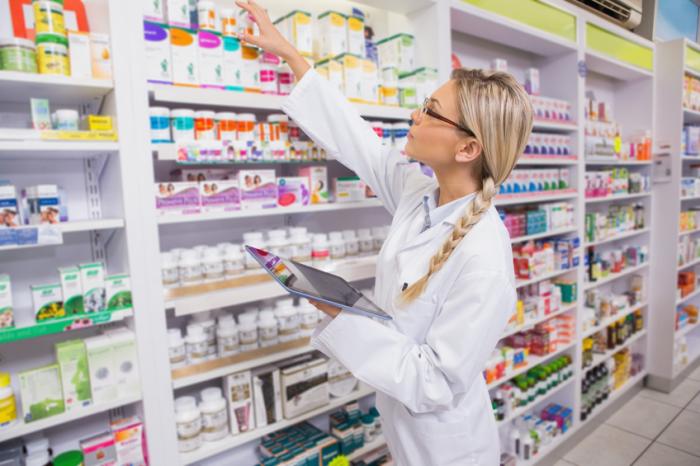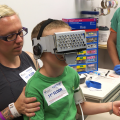 The human gut microbiome has received a lot of attention lately. These days, news articles and studies on probiotics, prebiotics, gut bacteria, and other similar topics are published all the time. Scientists, bloggers, and journalists have also started paying attention to microbial communities associated with other organs, such as the skin, lungs, and vagina; however, these communities are still very much flying under the radar: they receive far less attention than the microbial community found deep in the human gut. In my opinion, they get less attention than they deserve.
The human gut microbiome has received a lot of attention lately. These days, news articles and studies on probiotics, prebiotics, gut bacteria, and other similar topics are published all the time. Scientists, bloggers, and journalists have also started paying attention to microbial communities associated with other organs, such as the skin, lungs, and vagina; however, these communities are still very much flying under the radar: they receive far less attention than the microbial community found deep in the human gut. In my opinion, they get less attention than they deserve.
The microbiota of the skin
It’s easy to forget that the gut is not the only organ in the human body that is home to a complex microbial ecosystem. In reality, all of the spaces and surfaces of the body that are exposed to the outer, external world is colonized by microorganisms. Sometimes, microbes also make their way into more enclosed spaces, such as breast tissue and the brain, but at present, we know very little about these invading critters.
The one organ in the human body that is most clearly exposed to the outside world is the skin. The skin acts as a physical barrier that separates the organism from the external environment and plays a critical role in protecting it from physical damage and microbial pathogens.
The skin is very good at this job. It has evolved to only let certain substances pass into systemic circulation, and it produces a range of secretions that inhibit pathogen colonization and act to maintain homeostasis. There’s a catch, though; the skin can’t do this job optimally by itself – it needs input from microorganisms.
The skin is no different from the rest of the human body in that it has co-evolved with microbes. The skin is coated with a layer of fungi, bacteria, and other microscopic life forms, all of which are integrated into the biological systems of the organ. If this microbial community were to suddenly disappear or change dramatically, the skin’s ability to ward off pathogens and keep the body healthy would be compromised. Unfortunately, this is what seems to be happening to the skin of some people today. They are obviously not completely losing their skin microbes, but they stimulate their skin in such a way that their skin microbiota becomes destabilized and degraded.
Novel stimuli, novel microbiomes
Virtually every time we subject ourselves to stimuli that are novel and foreign from an evolutionary perspective, bad things happen. The examples of this are numerous. Many of the things we humans today put in and on their bodies have been shown to disturb normal physiologic processes. These things include sugary foods, pharmaceutical drugs, trans-fats, and so forth.
The adverse effects induced by many of these agents are mediated by the microbiota. When we put a hazardous substance in or on our body, we’re not just harming the health of our human self, but we’re also harming the health of the microbiota. For example, if we smoke, and hence, breathe in all of the toxic compounds found in tobacco smoke, the environment of the lungs changes, something that triggers changes in the configuration of the respiratory microbiota. Evolution never prepared the human body to harbor the type of microbiota that develops as a result of smoking, so consequently, a conflict between the human and microbial parts of the body arises; a conflict that may result in inflammation and pulmonary disease.
These types of processes don’t just occur in the lungs, they can take place anywhere on the body. A lot of contemporary people, in particular women, have a bathroom cabinet that is stocked with different soaps, lotions, styling gels, shampoos, and many other products that are applied on the skin or in the hair. Some of these products may be relatively harmless; however, others may induce adverse health effects.
Are you scrubbing away bacteria that help enforce your skin’s defense systems?
When you lash a concoction of chemical substances of questionable safety onto your skin, you may not only speed up the ageing process, “clog up” your pores, and mess with the skin’s natural capability to maintain healthy levels of moisture, but you may also be changing the microbial community of the skin, perhaps in such a way that you become more susceptible to infections.
As a society, we’ve learned that soap and antibacterial gels help protect us from pathogens. But is this really true? What is often forgotten is that soap is very alkaline; it has a high pH. Our skin, on the other hand, is acidic, it typically has a pH below 5 (1). The skin’s ability to maintain a healthy microbiota is largely determined by the pH (1). If the pH is low, beneficial bacteria are able to attach to the surface of the skin and pathogens have trouble setting up shop. However, if the pH is high, beneficial bacteria fail to attach to the skin and the risk of infections by pathogens is elevated.
These mechanisms are not unique to the skin. In the vagina for example, the state of the microbial community is largely determined by the pH. If the pH is low and lactobacilli are spewing out lactic acid, opportunistic pathogens are kept at bay, whereas if the pH is high and lactobacilli have lost their ground, Candida albicans and other potentially nasty critters can take over (2).
A single bout of hand-washing with soap is obviously not going to permanently change the pH of your skin; however, it may transiently increase the pH, as well as change the microbial landscape. If you wash your hands with harsh soap frequently, your skin’s defenses may become compromised and bad bugs may get a chance to flourish.
Studies have shown that health-care workers – a group of people who wash their hands with soap very frequently – have a hand microbiota that is disturbed and rich in pathogens (3, 4). These individuals are particularly prone to picking up harmful bugs, because many pathogens are present in their work environment. In order to avoid the spread of pathogens, many health-care workers frequently use antibacterial gels. This strategy doesn’t seem to be working, though. Actually, it may be making everything worse.
When we rub our hands with antibacterial lotions, we may get rid of certain microbes that have the potential to cause us harm; however, we may also damage the microbial community as a whole and elevate our risk of picking up pathogens. Putting antibacterial gels on your skin is somewhat analogous to taking oral antibiotics: you kill some potentially “bad” bacteria, but in the process you may be setting yourself up for a whole host of other problems.
Less is more
The point I’m trying to make here is not that soap, antibacterial gels, and other products that are used to “clean” the skin are never useful. In hospitals, for example, the pathogen load is high, and hygienic measures need to be in place to avoid the spread of pathogens between patients and staff. What I’m trying to say is that the average Joe doesn’t need to use antibacterial gels or wash his hands with soap every few hours. Actually, doing so may undermine, rather than enhance, his protection against pathogens.
In the industrialized world, virtually everyone uses soap, shampoo, conditioner, and/or other similar skin and hair products on a regular basis. It’s a natural part of our lives to put creams and lotions on our skin and wash and style our hair; hence, a lot of people may find it surprising to hear that this practice may be doing them more harm than good. Moreover, they may be reluctant to eliminate or reduce their use of cosmetics, soaps, and other body-care products.
What we have to remember, though, is that the practice of applying a bunch of man-made products to our skin and hair is evolutionary novel. Hunter-gatherers, both contemporary and ancient, obviously don’t have hair gels, soap, or shampoo, but they do just fine regardless. Actually, they seem to be doing better than us in some respects. Traditional, non-westernized people generally have nice, healthy skin and a diverse, robust microbiota. Some of these people die at a young age due to infections, but that’s not because they don’t wash their hands with soap, but rather because they don’t have access to modern medicine.
The environments in which contemporary humans live are very different from Paleolithic environments; hence, we are not necessarily best off replicating every aspect of our hunter-gatherer forebears’ lifestyle. However, we can obviously learn a lot from them. The human skin is perfectly capable of functioning on its own; it doesn’t need to be covered with harsh soap, antibacterial gels, or other similar products. Actually, doing so may harm, rather than strengthen, the skin’s natural defenses. Instead of focusing so much on getting rid of bad bacteria, we should probably focus on nurturing good ones.
The bottom line
We should be cautious about the amount and type of products we put on our skin and in our hair. This is true for all types of skin and hair products, including cosmetics and other beauty products, hair gels, antibacterial lotions, moisturizers, and so forth. Many of these products, in particular those that contain a long list of ingredients even chemists don’t know how to pronounce, may accelerate the ageing process, destabilize the skin microbiota, and/or mess with the skin’s natural ability to maintain healthy levels of moisture. As a general rule, less is more!



